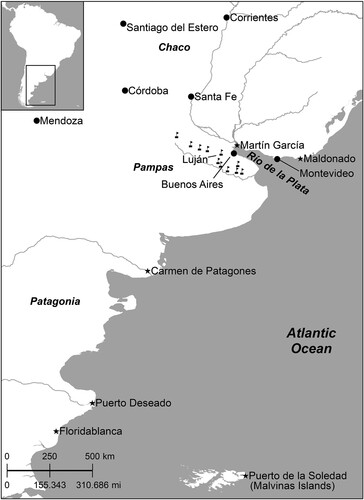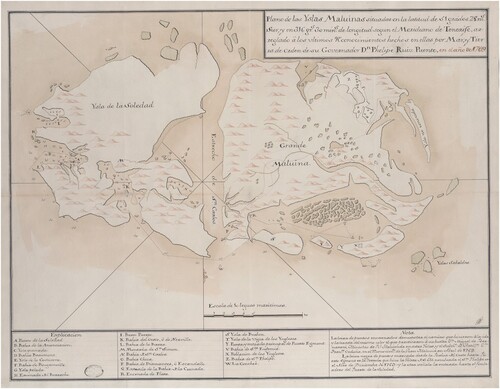Figures & data
Map 1. Settlements and Sites of Penal Deportation. Administrators in colonial settlements (dots) banished purported criminals to numerous destinations (stars) throughout the region. Presidios along Buenos Aires’s southern borderland (squares with flags) and elsewhere were simultaneously sites of deportation and where Indigenous captives were routed into penal systems.

Map 2. “Plano de las Yslas Maluinas” (1769). The Spanish military establishment of Puerto de la Soledad (letter A, far left) was located on the Isla de la Soledad along the Bahia de la Anunciacion (letter B). Spain’s military maintained detailed information regarding coastlines, yet demonstrated less knowledge of the island’s interior, where presidiarios frequently labored. Source: España. Ministerio de Cultura y Deporte. Archivo General de Indias, MP-BUENOS_AIRES,82BIS.

